
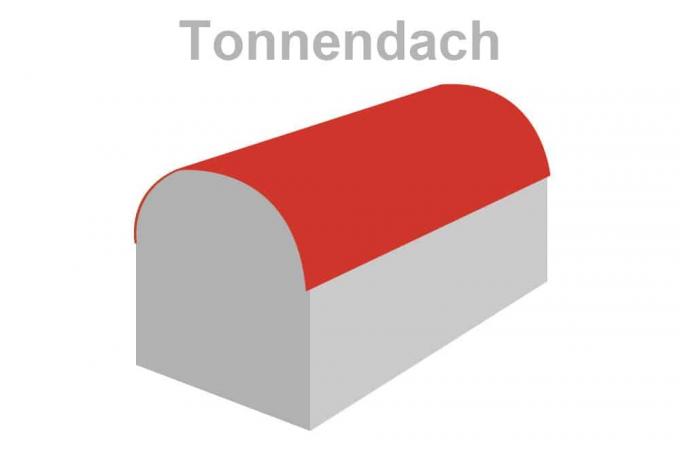
Table of contents
- The barrel roof
- Construction and statics of the barrel roof
- Roof structures on barrel roofs
- sandwich roof
- Special forms of the barrel roof
- segment roof
- "fake" barrel roof with ridge
- roof pitch or -rounding
- Roof structures in the barrel roof
- Costs
- Advantages and disadvantages
The arched shape of the barrel roof can only be found on a few residential buildings in our latitudes. However, technical progress and the creative courage to try something new ensure that this unusual roof construction is becoming more widespread. Advantages and disadvantages are explained below, as well as general information about the barrel roof to help understand its structure and the technical constraints.
The barrel roof
Originally, the barrel roof was known mainly from the area of sacred buildings, where brick barrel vaults first step from the flat ceiling to the filigree and at the same time highly complex structures of the Gothic marked. In the age of industrialization, this roof, which can be realized in a large span and at the same time in almost any length, conquered the industrial and transport building sector. It was only in the context of classical modernism in the 1920s that the barrel roof made its way into the world of residential buildings through the use of steel constructions and new, clear building shapes. Rarely to be found in postmodernism, the barrel roof is not experiencing a real renaissance today but again and again for distinctive forms and at the same time easily usable interiors with individually planned ones residential houses.
Construction and statics of the barrel roof
Earlier barrel roofs were usually created in the form of a classic, brick arch construction. This enabled the load to be transferred to the underlying, load-bearing outer walls via the curved surface made of stone or brick and mortar without any weak points. In order to absorb the pressure exerted by the arch construction to the outside, the walls were mostly stabilized on the outside by means of extensions or stiffening transverse walls.
In terms of statics, modern barrel roofs, on the other hand, usually correspond to what developed during the course of industrialization and is used unchanged to this day in terms of load transfer. Static elements of the modern barrel roof are:
- Radially curved arched girders made of steel or wood
- Flat covering as a base for roof construction, usually made of wood formwork or sheet metal
- Bracing cross connections between the girders, often designed as a cross brace ("Andreas Cross")
- Tension band between the lower support points of the arch girders to absorb the shearing forces at the arch attachment
A NOTICE:
Not every single bow carrier has to be secured with a drawstring. In the case of short structures, the concrete ring anchors of the gable walls or a few tie rods that can be invisibly accommodated in the interior walls can be sufficient.
Roof structures on barrel roofs
Although the barrel roof is quite similar to the rafter roof in terms of the structural structure of beams, it differs fundamentally in the structural design of the roof. Due to the curvature of the roof surface, insulation between the rafters and cladding of the bottom view are possible, but usually extremely complex and therefore not financially profitable. Instead, a roof structure for the barrel roof has established itself today:
sandwich roof
- Bow girder visible in the interior
- Prefabricated sandwich element and adapted to the curvature of the girder, consisting of a lower load-bearing shell, polystyrene insulation and a top layer as weather protection and water-bearing layer
- Top and bottom sheet metal, usually titanium zinc or aluminum
DANGER:
Since these sandwich elements, which originally came from industrial construction, cannot be bent, the individual segments have to be prefabricated to size.
Far more rarely, a barrel roof is created as a wooden structure:
- Flat formwork as a covering visible from the inside on arched girders
- Vapor diffusion-tight level on formwork, mostly foil
- Crosswise to the vault running joists on formwork, insulated with mineral wool that can be flexibly adapted to the roof curve
- Roof covering made of preformed sheet metal parts, possibly on a substructure made of battens
A NOTICE:
Since a classic counter batten running from the eaves to the ridge is not an option for barrel roofs due to the curvature of the roof, sheet metal roofs that are not rear-ventilated are usually used here. Depending on the system used, the membrane preventing the entry of steam from the interior can then be designed to be semi-permeable, so that moisture in the insulation is still released to the inside can be.
Special forms of the barrel roof
For economic reasons, there are various forms of barrel roofs that deviate from the true, consistently rounded arch:
segment roof
- Resolution of the arch into a polygon with several straight sections
- Construction here like a straight roof surface is possible, but transition points between the roof segments are required, therefore a large number of detail points
- Conditionally also suitable for brick covering
"fake" barrel roof with ridge
- Formation of a ridge with curved roof surfaces on both sides
- Suitable for rear-ventilated constructions as air can escape at the ridge point
- Mostly slightly pointed shape deviating from real bow
- Conditionally alternative roof coverings to sheet metal are possible, since the roof curvature is much smaller
roof pitch or -rounding

The arched shape of the barrel roof results in the lack of a uniform roof pitch. Instead, every barrel roof, regardless of the arch radius, always has a particularly steep incline at the base and an almost non-existent incline at the apex. Not every barrel roof necessarily has to consist of a semicircle. Differently selected arch segments can lead from the well-known dome shape to a flat incline with an upward curve.
Roof structures in the barrel roof
Dormer windows, cross gables and roof balconies can be implemented equally well with barrel roofs. Due to the common covering with sheet metal, transition points between the structure and the roof skin can be solved quite easily. The fairly steep incline at the foot of the complete semicircular arch even makes it possible to use "normal" facade windows in the barrel roof to a certain extent. The usability of the roof space thus increases compared to others roof shapes clearly on.
Costs
Due to a very limited selection of materials and a large number of components to be individually manufactured, the barrel roof is considered an expensive roof shape. Although it also offers numerous advantages, none of these are to be found in the area of cost reduction and a high degree of usability of "off-the-shelf" series products. So you can see that the barrel roof is also clearly in the area of individual planned individual building and will hardly appear in the creation of affordable living space should.
Advantages and disadvantages
As is clear from the previous explanations, the rather unusual shape of the Barrel roof has some elementary advantages, albeit with weaknesses that should not be neglected accompanied:
Advantages
- Optimum ratio of envelope surface to created space
- Due to the high inclination at the foot of the barrel, good usability of the rooms (almost vertical walls)
- Statically effective supporting structure due to the arch shape without a real center of the span
- With sheet metal covering, no weak points in the form of transitions or ridge details
- Modern construction and design options
Disadvantages
- No classic structural design can be implemented
- Economical supporting structure limited to steel or wood, wood, however, is quite expensive due to the effort involved in manufacturing the arched girders
- Limited selection of possible roof coverings
- A lot of effort and precise planning required for the prefabrication of the roof elements
- high costs
 Home editorial office
Home editorial office
Learn more about roof / attic
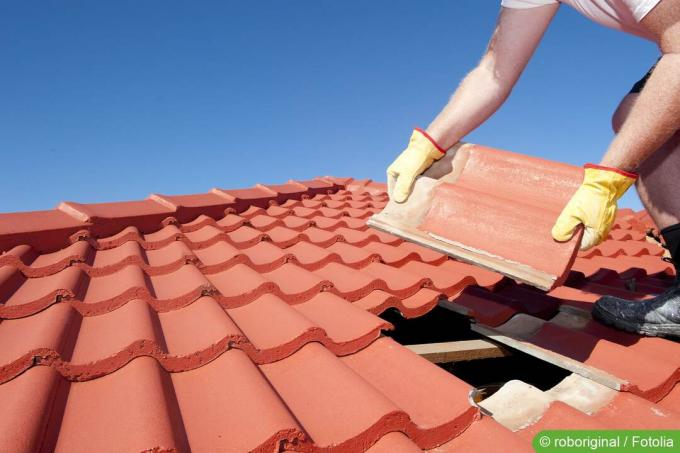
Snow blows under roof tiles: what to do?
Snow drifts often get under the roof tiles when blizzards or strong winds blow them underneath. The moisture often causes damage from meltwater. Air spaces between the roof tiles are to blame. Homeowners should now find out how to counteract this.
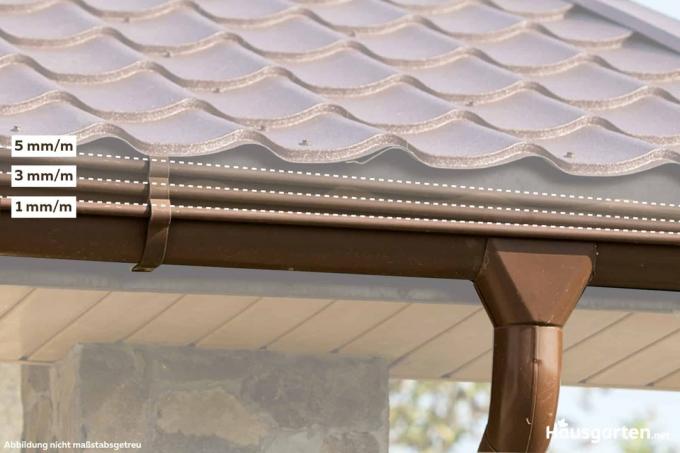
Gutter slope: the ideal gradient
For a gutter to function properly, a slope that has an ideal inclination is required. Various factors have to be taken into account. Before installation, you should find out how the gradient is to be calculated and implemented.
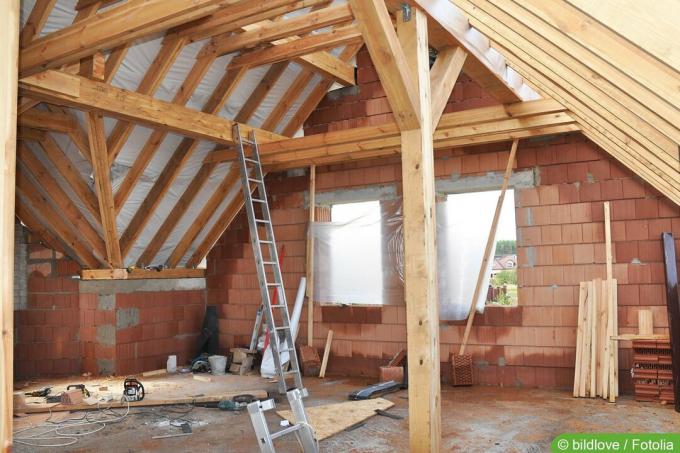
Which attic insulation can be walked on immediately?
Attic insulation effectively reduces heat loss from the building. If the attic is to continue to be used as storage space, the insulation should be accessible as soon as possible. A number of materials can be used for this. They each have advantages and disadvantages as well as different costs.
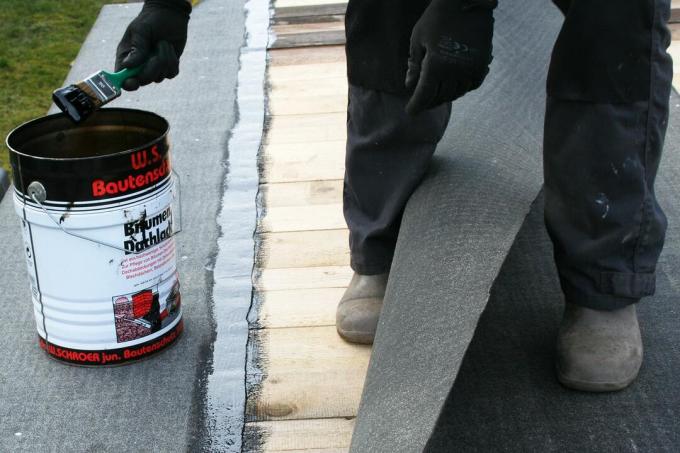
Bitumen stains: 6 removal tips
If you have to process bitumen, you should be careful. The black, viscous mass is sticky and adheres well to clothing, hands and all possible surfaces with which it comes into contact. With our tips you can successfully remove it.
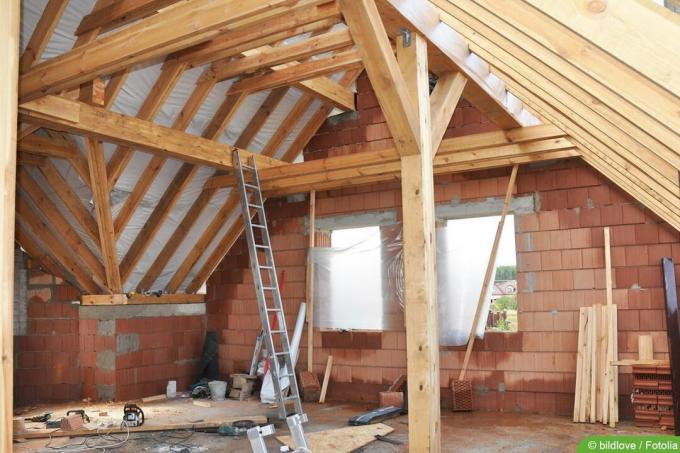
Attic: OSB or Rauspund as roof boarding?
Both OSB and Rauspund boards are suitable as roof boarding. But what are the differences and what is better suited for the attic? Our guide answers these and other questions about the two materials.

Laying a vapor barrier: how far does the vapor barrier have to go?
Laying a vapor barrier is essential in some cases. But how far does the vapor barrier have to be installed, what is it and what are the differences? These and more questions are answered in the following guide.



